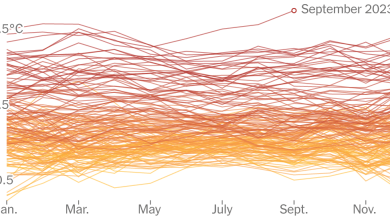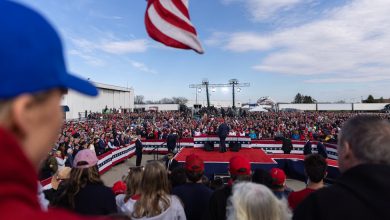Finally, Some Good News on Inflation

This is not the end of inflation. It is not even the beginning of the end. But it is, perhaps, the end of the beginning.
On Wednesday, the Bureau of Labor Statistics reported something we haven’t seen since the depths of the pandemic recession: a month without inflation. That is, the average price of the goods and services consumers buy was no higher (actually slightly lower) in July than it was in June.
Before I get to what the latest inflation numbers mean, two notes on reactions to the report.
First, there is absolutely no reason to question the numbers. There were many advance indications that this report, and probably the next few reports, would show a sharp drop in inflation. In fact, I wrote about that last week. It’s not just falling gasoline prices; business surveys point to declining inflation and supply chain problems are easing. Zero was a somewhat lower number than most observers expected, but not wildly so.
Second, the enraged reaction of Republicans to the report came as something of a surprise, at least to me — not that it happened, but the form their outrage took. I expected them to accuse the Biden administration of cooking the books. Instead, most of the flailing seemed to involve a failure to understand the difference between monthly and annual numbers.
When President Biden declared, accurately, that we had zero inflation in July, many on the right accused him of lying, because prices in July 2022 were 8.5 percent higher than they were in July 2021. Do they really not understand the difference? To be fair, sloppy business reporting may have contributed to their confusion — I saw many headlines to the effect that “inflation was 8.5 percent in July.” But the more fundamental issue, surely, is that it’s difficult to get people to understand something when their sloganeering depends on their not understanding it.
OK, but what about the substantive implications of the Big Zero?
Unfortunately, one month of zero inflation doesn’t mean that the inflation problem is solved. Economists have long known that you get a much better read on underlying inflation if you strip out highly volatile prices — normally food and energy, but there are a variety of measures of core inflation, and all of them are still unacceptably high. That’s a clear indication that the economy is running too hot. The Federal Reserve has been raising interest rates to cool things down, and nothing in Wednesday’s report should or will induce the Fed to change course.
The Fed might, however, take some comfort from a different report, released Monday: the New York Fed’s monthly Survey of Consumer Expectations, which showed “substantial declines in short-, medium- and longer-term inflation expectations.”
Ever since prices took off last year, Fed officials have been concerned that inflation might become entrenched. What they mean is that businesses and consumers might come to believe that large price increases are the new normal, making inflation self-perpetuating, and that getting inflation back down would require putting the economy into a severe, extended slump. That’s what most economists think happened in the 1970s, and it’s not an experience anyone wants to repeat.
The good news is that there doesn’t seem to be any entrenching going on. Public expectations of future inflation are falling, not rising; financial markets also seem to anticipate much lower inflation than we’ve seen over the past year.
Despite this good news, the Fed will surely keep raising rates until it sees clear evidence that underlying inflation is coming down. But it has some breathing room to be less aggressive than it might otherwise have been, waiting to see how the economic situation develops.
Overall, falling inflation probably won’t have much effect on economic policy. It might, however, have big political implications.
The truth, although Republicans go feral when you point it out, is that Joe Biden has presided over a huge jobs boom. Yet he has gotten no credit for that boom, possibly in part because many Americans don’t know about it, but largely because voters are focused on inflation — especially the fact that prices have risen faster than wages, reducing families’ purchasing power.
Now at least that part of the story has gone into reverse. Wages are still rising fast, which is actually one reason to believe that underlying inflation remains high. But for now, at least, inflation has slowed, so workers will be seeing significant real wage gains. Indeed, average real wages rose half a percentage point in July alone.
Hence G.O.P. outrage over accurate reporting on July’s inflation numbers. Republicans had been counting on high inflation, and high gas prices in particular, to deliver big gains for their party in the midterm elections. Suddenly, however, the economic facts have a liberal bias: Gas prices are plunging, inflation is down, and real wages are up.
Will these facts make a difference in November? I have no idea. But the current hysteria on the right shows that Republicans are worried that they might.
The Times is committed to publishing a diversity of letters to the editor. We’d like to hear what you think about this or any of our articles. Here are some tips. And here’s our email: [email protected].
Follow The New York Times Opinion section on Facebook, Twitter (@NYTopinion) and Instagram.




